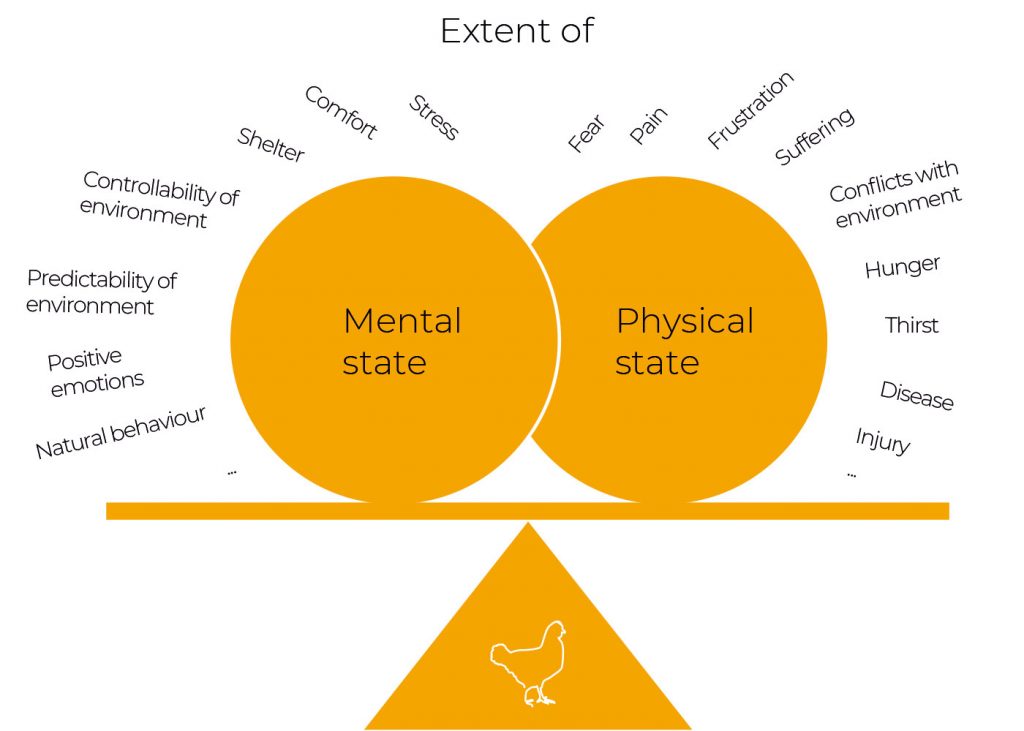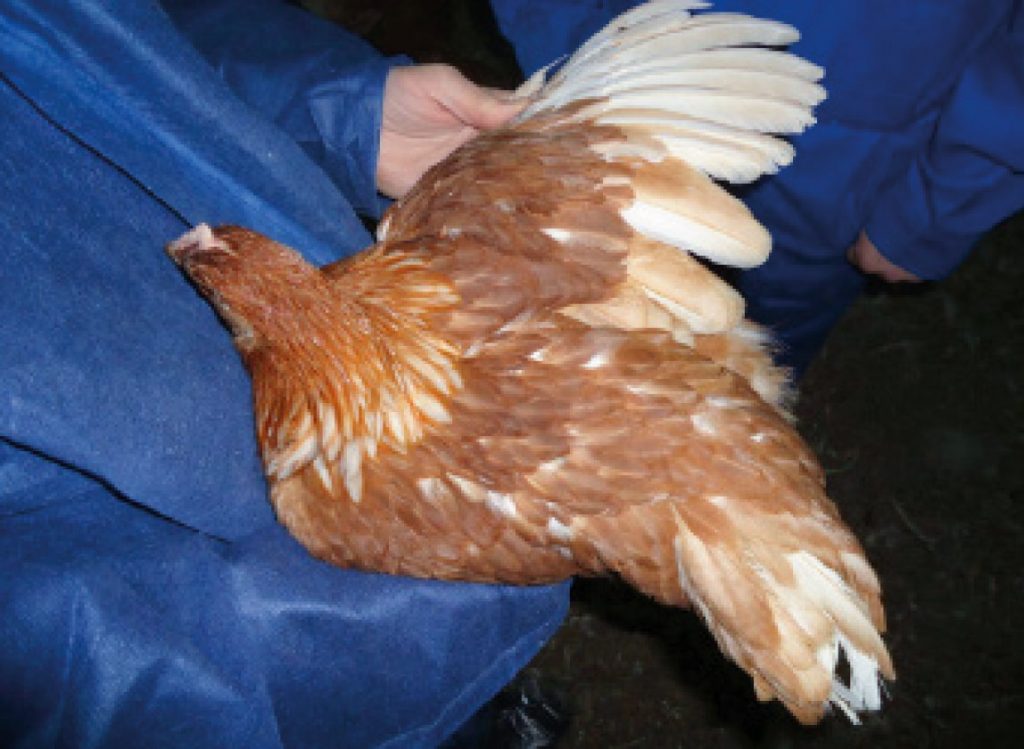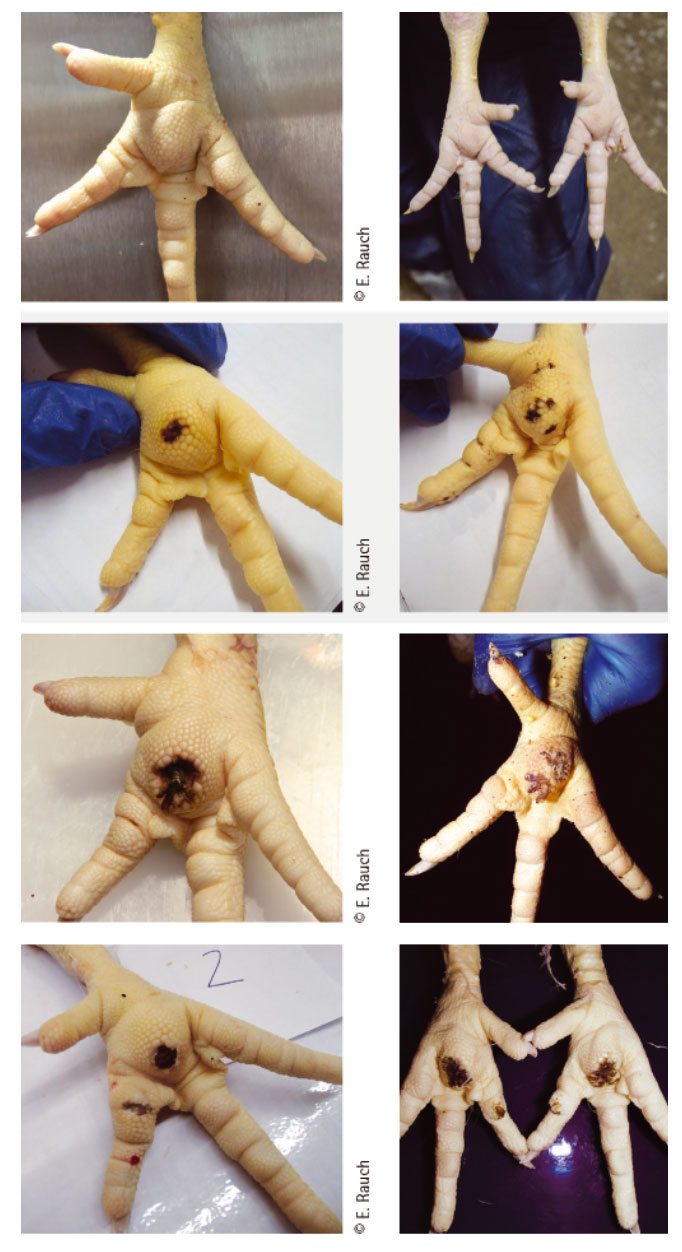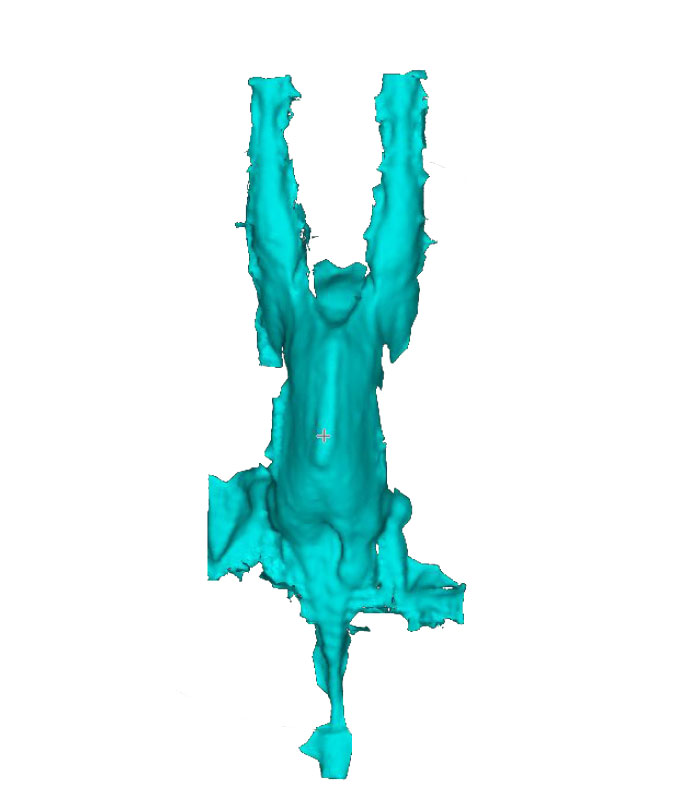 Linkedin
Linkedin
Animal welfare is of growing concern in many countries. The objective of this article is to discuss why there are differing definitions and approaches to the assessment and improvement of animal welfare, whether differences matter and where there is general agreement in current scientific concepts. Furthermore, future directions regarding on-farm welfare improvement are proposed. It is generally agreed that animal welfare refers to the multi-faceted physical as well as mental state of the individual animal and can range from very good to very poor.
In order to cover the multitude of relevant aspects, different approaches, and thus welfare definitions, are used. They commonly do not contradict each other, but approach welfare from slightly different perspectives or with different focal points. For the assessment of welfare, a broad number of indicators must be used that may be either animal- or resource- and management-based. In terms of validity, animal-based indicators are to be preferred, but due to feasibility aspects, often a mixture of different types of indicators are recommendable and used. The selection of individual welfare indicators is, however, not only based on scientific and feasibility criteria, but is also value-dependent. This similarly applies to the interpretation of conflicting results regarding different measures. Transparency about the decision-making concerning measure selection and interpretation is therefore crucial. When deciding about acceptable welfare levels, various human interests come on board, generating a societal debate. The practical welfare assessment must be reliable in order to be useful and trustworthy, which requires considerable efforts. The assessment can serve different purposes, but most importantly provides poultry farmers useful information and starting points for improvement. Many multifactorial welfare problems can only successfully be tackled by farm-specific, longer-term optimisation processes. Joint learning and knowledge sharing in networks of farmers together with other experts is a very promising approach for this. While further knowledge about risk factors for welfare problems is still needed, practice-led innovations should also be stimulated. Moreover, continued methodical research is necessary to improve the choice and practicability of valid animal-based indicators for application in commercial production systems.
Keywords:
Animal welfare, welfare assessment, poultry production.
Animal welfare is a topic that has been receiving increasing attention globally (e.g. OIE Global Animal Welfare Strategy, OIE 2021a), particularly in Western countries (e.g. EU-legislation on laying hens and broilers, EU 1999, 2007), and has led to many initiatives in the private sector to improve animal welfare. Among the industry initiatives are labels or brands. Moreover, company differentiation may be aspired by applying animal welfare standards which are not necessarily made explicit, but are part of the companies’ corporate social responsibility. Retailers’ standards for their suppliers may not only stipulate enhanced management standards, but also ensure that products will only be purchased from certain production systems with high welfare standards, such as from non-cage or non-mutilated animals. This is an increasing development, with globally acting retailers (such as Burger King or McDonald’s) having substantial impacts on producers (Knierim and Pajor 2018, Bessei 2018). Another approach is the so called “Initiative Tierwohl” (Animal Welfare Initiative) in Germany, organised by most retailers, processors and producers’ associations. Retailers pay a certain amount of money per kilogram of poultry into a fund, from which participating farmers receive a premium for adhering to certain welfare standards (Initiative Tierwohl, without year). Also, voluntary agreements between industry and government have been established, like the German agreement on the ban of beak-trimming in laying hens (BMEL and ZDG 2015). Considering the multitude of approaches and initiatives to the improvement of poultry welfare and the many actors with different motivations, it is not amazing that the actual understanding of animal welfare varies. This renders communication difficult. Therefore, it is the aim of this paper to briefly address these issues.
Animal welfare is composed of many different aspects that determine the animal life’s quality; thus, it is a multi-faceted or multidimensional state. In order to cover the multitude of relevant aspects, they are usually categorized. This can be done in different ways. For example, the World Organisation for Animal Health OIE (2019) states in the Terrestrial Animal Health Code that “An animal experiences good welfare if the animal is healthy, comfortable, well nourished, safe, is not suffering from unpleasant states such as pain, fear and distress, and is able to express behaviours that are important for its physical and mental state.” This definition refers to two basic and often used categories, “physical and mental state”, and concurrently mentions further operational categories which relate to the ‘Five Freedoms’ first mentioned by the British Brambell Committee in 1965 and codified by the Farm Animal Welfare Council (FAWC, 1979). They encompass the freedom (1) from hunger or thirst, (2) from discomfort, (3) from pain, injury or disease, (4) to express (most) normal behaviour and (5) from fear and distress. It is important to understand that the welfare state of an animal gradually depends on the extent of these freedoms, that welfare is not an all-or-none issue, but a continuum from very poor to very good (Broom, 1988). Broader categories are used in the German Animal Welfare Act (2006), stating that the life and well-being of animals shall be protected and that no pain, suffering or damage be inflicted on them without good reason. Thus, mental aspects are categorized into pain, suffering and well-being, and physical aspects into the life itself and damage. Another sorting of the different aspects of welfare relates to societal welfare concerns. According to Fraser et al. (1997) they refer to the three dimensions: feelings, physical condition and naturalness. Ultimately, these different approaches intend to ensure that important aspects of welfare are not neglected. The multidimensional nature of welfare (Figure 1) additionally is a reason for the different welfare definitions. At closer scrutiny, commonly they do not contradict each other, but approach the phenomenon from different angles. Thus, with a few, mostly not very influential exceptions, there is no fundamental dissent between the different categorisations and definitions; however, they reflect somewhat different focal points or perspectives.

Another important consequence of the multidimensionality of animal welfare is that it cannot be assessed based on one indicator alone. Depending on the question, a large number of measures should be applied (Fraser 1995, Knierim et al. 2001, OIE 2021b). Animal welfare indicators can basically be divided into two different categories, each with different advantages and disadvantages: animal-based vs. resource- and management-based measures. When choosing welfare measures or indicators, the main concern (besides feasibility) is validity of the measure (Knierim and Winckler, 2009). Therefore, animal-based measures that directly provide information about the state of the animals should in principle be preferred (Johnsen et al. 2001, Whay et al. 2007). Examples are plumage, skin, keel bone or foot pad condition, body weight, mortality rate or fear responses, water consumption or use of different resources. Another advantage of animal-based criteria in welfare standards is that they allow the farmer freedom in which way they reach the set goal. On the other hand, animal-based measures are still saddled with a number of methodical challenges (e.g. Rushen and de Passillé 1992, Knierim and Winckler 2009, Mullan et al. 2009) and are in general more difficult and costly to implement (particularly behaviour measures). This is probably the main reason why animal-based measures are still underused, and why most animal-based measures are related to animal health (e.g. Zapf et al. 2017). Health indicators that are recorded routinely (e.g. mortality or certain pathologies in slaughter records), or that can be recorded in an automated way at a bottleneck such as the slaughterhouse (e.g. foot pad lesions in poultry) are likely candidates. Particularly health measures that give information about longer-term welfare states are of special interest (Grandin 2017). Nevertheless, it must be considered that disease causes may be sometimes outside the control of the farmer. Additionally, it might be necessary to grant sufficient time for reaching improvements. In the past and still in current legislation or standards, resource- and management-based measures such as type of housing system, stocking density, light, feed, water or litter provision were and are predominantly used. Mostly they are easier to apply, but their effect on the animals depends on interactions with other factors and preconditions on the side of the animal (genetics, earlier experience) (Butterworth et al. 2011, Veissier et al. 2012). These measures are less valid concerning the welfare state of the animals (Waiblinger et al. 2001), and their use alone does not provide sufficient animal welfare information. Nevertheless, resource- and management-based criteria, such as access to free range or use of non-cage systems, are easier to communicate to the public, compared to e.g. certain limits of mortality rates or lameness prevalence. Moreover, the absence of resources may render certain animal-based measures redundant; for instance when perches are lacking, it needs not to be observed whether birds do perch. On the other hand, when resources are available, quality and availability of the resources and interactions with other factors such as lighting or rearing experience will affect the actual behavioural freedom or possibly cause behavioural problems. In recent welfare assessment protocols (e.g. Welfare Quality® 2009, Knierim et al. 2020), a combination of the different types of measures with a preference for animal-based measures is used. Resource- and management-based measures are mostly intended to cover certain behavioural aspects, while animal-based measures refer mainly to health aspects. In addition, some health measures are truly indirect measures of behavioural problems, such as plumage condition as an indicator of feather pecking (Gunnarsson et al. 1995, Tauson et al. 2005) (Figure 2). 
A further important criterion of validity is reliability. For systematic reasons it is usually addressed separately. Here it is asked whether measurement results are reproducible between and within assessors or over time (Knierim and Winckler 2009). In principle, deviations between measurements can occur in all types of data collection – even in the case of a length measurement, when using unclear measuring instructions or when reading errors occur. However, errors are the greater, the more complex the measurement is and the more they include subjective judgements (e.g. of the dimension or colour of a skin lesion, etc.). Apart from divergent judgements, perceptual abilities, personal experience and expectations may bias measurements (Vasseur et al. 2013). In terms of quality assurance, it is important to keep the measurement error as low as possible. For instance, the results of farm audits in animal welfare programmes should be consistent between assessors (Mullan et al. 2011). To ensure that results can be reproduced by different assessors, precise measurement instructions, sufficient training and reliability testing are necessary (Knierim 2013). If sufficient reliability is not achieved, it must be improved by refining the definitions, changing the observation methods and/or assessment categories, or by additional training. It may often help to combine different categories (March et al. 2007), observe fewer animals at a time, or provide better lighting for assessments of skin or plumage. It may also happen that a person is not suitable for data collection, because he or she is near-sighted or has other limitations of perception. Sufficient reliability is indispensable, otherwise results will not be trustworthy. This is not only decisive in scientific studies, but also in welfare monitoring where management decisions shall be based on the results, or where they are used for benchmarking or auditing. Ideally, reliability should not only be assessed initially, but re-checked at certain intervals, since the assessments can change with increasing experience (Vasseur et al. 2013). This is particularly important when several people are involved. Unfortunately, reliability testing is often neglected, partly because it can be rather complicated. A sufficient number of independent samples is needed, and the different behavioural or health categories should be represented as evenly as possible (Mullan et al. 2011, Knierim 2013).
The selection of welfare measures is not only affected by validity, reliability and feasibility criteria, but also by professional, ethical, cultural, or social background and possibly economic considerations. In addition, the interpretation of conflicting results regarding different indicators is difficult (Fraser 2003). An example is the overall welfare assessment of hens with free-range access that show less feather pecking (Jung and Knierim 2018), but a higher mortality rate (Häne et al. 2000) than hens without free-range access. In such a conflicting case a greater number of additional measures should be included. However, the principal challenge is, that there is no scientific basis today and likely not in the future for the decision on the relative importance of the individual indicators (Fraser 2003). Therefore, it is crucial to provide transparency about the decision on the selection and interpretation of different welfare measures. Regarding interpretation, it can be decided to allocate the same weight to all indicators (e.g. KTBL 2006), or to base weightings on majority views of experts (e.g. Boutreau et al. 2009), consumers or citizens. The final decision, about which level of welfare is acceptable or should be reached, is even more dependent on subjective judgements and should be based on a societal debate. Here various human interests, regarding e.g. economy, human health, labour safety or environmental protection come on board and have to be weighed against the assumed animal interests.
Welfare indicators may be recorded by the farmers themselves, by veterinarians or other advisors, by automatic means and at the ‘bottleneck’ slaughterhouse (Grafl et al. 2017, Louton et al. 2018). The latter allows easy inspection of a high number of animals or even the whole flock and provides retrospective information about on-farm welfare, as long as the indicators assessed are not unduly influenced by catching and transport. Slaughter records commonly include figures on dead on arrivals, cachexia, pathological changes like ascites and organ abnormalities (Starosta 2015). 
However, often reliability of recording is poor. An important future task is a better standardisation of welfare assessments at the slaughterhouse (Louton et al. 2018). To lesser degree, this also applies to the frequently applied automatic detection of footpad dermatitis in broilers (Lund et al. 2017) in fulfilment of the EU directive (EU 2007). Automatic detection of footpad dermatitis is also commercially used in turkeys and ducks, and could be extended to laying hens and broiler breeders. Further welfare indicators with a potential for automatic recording at the slaughterhouse are feather damage (laying hens, broilers, broiler breeders, turkeys), skin lesions (laying hens, broilers, broiler breeders, turkeys, ducks), including hock burns (broiler, turkeys, ducks) and keel bone damage (laying hens, Jung et al. 2021) (Figure 4). However, automatic recording is also possible at the farm. Precision livestock farming systems (PLF) may help to improve animal welfare through providing continuous welfare information (Rowe et al. 2019) for whole flocks and possibly through establishment of early warning systems which may alert farmers to potentially upcoming problems so that they can adopt early preventive measures. Technical progress will certainly increase options to monitor animal welfare on-farm and contribute to welfare improvements considerably. However, care should be taken not to neglect human control and interaction with the animals, and to avoid negative effects on the human-animal relationship which is also an important welfare factor (Zulkifli 2013). For stockpeople who are more animal- than technology-oriented, it may even impair labour quality. 
A large body of animal welfare research is dedicated to assess effects of certain housing or management conditions on animal welfare and to unravel causes of welfare problems. Many poultry welfare problems such as feather pecking, cannibalism or keel bone damage are long-standing subjects of research due to their challenging multifactorial nature. This research contributes significantly to the growing knowledge about risk factors for welfare, but successful transfer of results into farm practice is limited. Barriers are not only lacking knowledge transfer into practice (Jung and Knierim 2018), but also economic and organisational constraints concerning implementation. The high number of contributing factors and their quality and interactions vary from farm to farm. The application of only a single measure, e.g. provision of more litter of better quality to prevent feather pecking problems, seldom leads to profound improvement. Although the preventive effect of friable litter is scientifically well established (Jung and Knierim 2018) there are individual farms that have a rather poor litter quality, but no feather pecking problem. To investigate associations between potential risk factors and welfare problems under real farm conditions, epidemiological studies have been increasingly undertaken (see overview for feather pecking in Jung and Knierim 2018). Altogether they confirm the multifactorial cause of many problems and the potentially variable outcomes at farm level. Therefore, we conclude that individual monitoring of the respective welfare outcomes on-farm is an important precondition for welfare improvement. It enables the farmer (potentially together with an advisor) to decide whether action is needed and to assess its effectiveness (Zapf et al. 2017). If welfare problems or possible risk factors are identified, steps of improvement should be tailored to the specific farm (Lambton et al. 2013). This process may be even more successful, when not performed in the classical form of advice to the farmer, but as joint learning and knowledge sharing among farmers and other experts (e.g. van Dijk et al. 2019). Such networks do not only largely motivate participating farmers, but the transdisciplinary exchange considerably contributes to a general aggregation of knowledge and to valuable innovations in practice. Although, change of single factors may often not lead to expected improvements on individual farms, the number of fulfilled preventive measures appears to matter. With regard to feather pecking farms implementing more recommended measures, achieve a better outcome (Lambton et al. 2013, Jung and Knierim 2019). For further welfare problems, this has yet to be investigated. Regarding catching, transport and slaughter, similar principles as outlined above apply, and in general, potential welfare problems during these last stages of a bird’s life should not be neglected (e.g. EFSA, 2011).
Animal welfare is a multi-faceted state of the animal. This needs to be taken into account when assessing welfare by using a variety of, preferentially animal based, welfare indicators. Animal welfare assessment on-farm or at the slaughterhouse provides poultry farmers with useful information about their flocks and starting points for improvement. Regardless of the purpose of assessment, its reliability is of great importance and should receive more attention. Many multifactorial welfare problems can only successfully be tackled by farm-specific, longer-term optimisation processes, for which joint learning and knowledge sharing in networks of farmers together with other experts is a very promising approach. While further knowledge about risk factors for welfare problems is still needed, practice-led innovations should also be stimulated. Moreover, continued methodical research is necessary to improve the choice and practicability of valid animal-based indicators for application in commercial production systems.